- Author Jason Gerald [email protected].
- Public 2023-12-16 10:50.
- Last modified 2025-01-23 12:04.
Before playing the guitar, make sure the sound emitted by the strings is really in tune. You can do this easily and simply using tuner. However, not everyone has a tuner. You can tune your guitar without using a tuner, either with the strings alone or using harmonics. Neither of these methods can tune the guitar to absolute pitch (standard tone as in tuner). If you're playing with other musicians, tune the guitar to achieve absolute pitch using a reference pitch (tone from another instrument).
Step
Method 1 of 3: Tuning the Guitar from its Own Strings
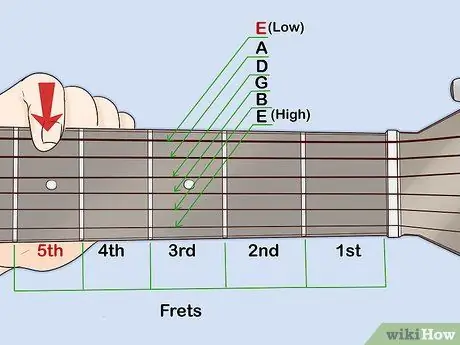
Step 1. Hit the low E string at the 5th fret (the columns on the neck of the guitar that are lined with small metal bars)
The low E string (also known as the sixth string) is the thickest, lowest-pitched string on the guitar. If you hold the guitar to play and you look down, the E string is at its top and closest to the body.
- The tone of the low E string pressed at the 5th fret is the same as the note on the open A string (without being pressed), i.e. the string below the low E string.
- In this method, you don't need to tune the low E string first. Even if your guitar isn't used for concert notes or absolute notes, all the strings should be in tune. Anything that's played will make the "right" sound, as long as you're playing the guitar alone without any other instrument tuned to a concert tune.
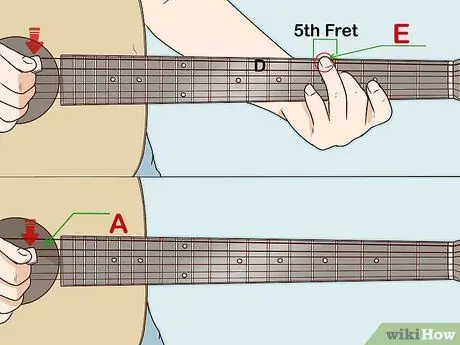
Step 2. Match the notes on the open A string with the low E string pressed at the 5th fret
Listen for the sound of the low E string, then pluck the A string open. Twist the open A string down or up until it matches the sound emitted by the low E string.
If the open A string is higher than the A note produced by the low E string pressed at the 5th fret, lower the pitch first, then slowly turn up to tune
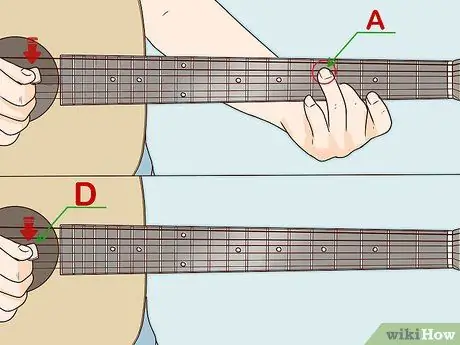
Step 3. Repeat the same way to tune the D and G strings
When you've got an A note, hit the A string at the 5th fret and sound it. This is a D note. Pluck the D string open, and tune the string down or up until the notes are in sync.
When the D string is in sync, press it at the fifth fret to play a G note. Strum the G string open and match the notes. Tune the strings down or up until the notes are in sync
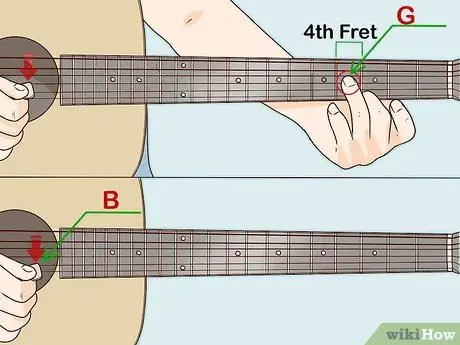
Step 4. Hit the open G string at the 4th fret to get the B note
The process is a bit different for tuning a B note, as there is a shorter distance between the G and B notes. Press the G string at the 4th fret to get a B note. Strum the B string open and tune the notes.
Twist the open B string down or up until it matches the G string pressed at the 4th fret
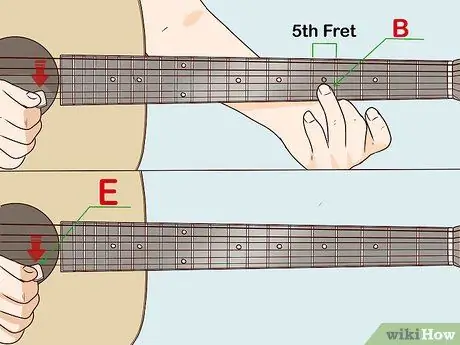
Step 5. Return to the 5th fret to tune the high E string
Once the B string is in tune, hit this string at the 5th fret and sound for a high E note. Rotate the open high E string down or up until the note is in sync with the B string pressed at the 5th fret.
If the note on the open high E string is higher than the E produced by the B string, lower the pitch first and increase it gradually and slowly. The high E string is the tightest string and breaks easily

Step 6. Play some chords (keys) to test the tuning results
When you're ready to play a song, first check the tuning by playing the chords of the song you want to play to make sure the sound is in sync. Listen carefully and adjust the strings up or down if necessary.
You can also play the checker chords, namely the E and B chords, to make sure the guitar sounds in sync. To play this chord, place your index finger on the fourth and fifth strings of the 2nd fret. Hit the third string at the 4th fret and the second string at the 5th fret. Shake the first and sixth strings openly. When the guitar is in tune, only 2 notes will be heard
Method 2 of 3: Using Harmonics
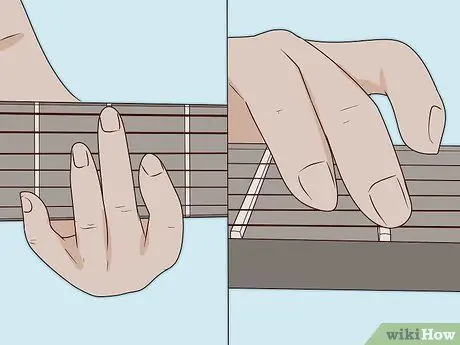
Step 1. Play the harmonics by lightly touching the strings
Natural harmonics can be played at the 12th, 7th, and 5th frets. Touch the guitar string just above the fret, without applying pressure, and pluck the notes with your other finger. Release the finger touching the string at the desired fret almost the same time you strum the string.
- If you've never experimented with harmonics before, you may need to practice first so you can play them consistently. If your guitar strings sound like bells, you've got it right.
- Harmonics are a method of tuning the guitar with a soft sound. Do not use this method in a noisy place.
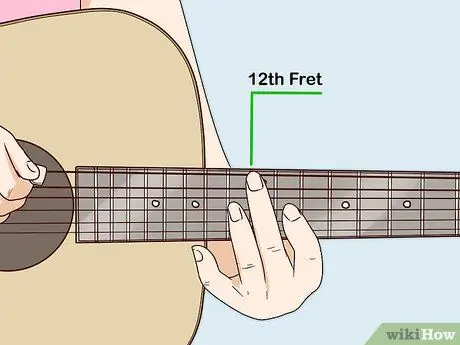
Step 2. Play the harmonics at the 12th fret to check the guitar intonation
If the intonation (similarity of notes between the frets) of the guitar is poor, the harmonics will not sound the same as the notes the strings make when you press and play them on the same fret. Pick a string and play the harmonics at the 12th fret, then hit that string at the 12th fret to play the actual notes. Compare the sound produced.
- Repeat this action on all the strings. Maybe the intonation is good on some strings, but bad on others.
- If the intonation is bad, try changing the strings and see if this fixes the problem. If not, you may have to take your guitar to a music supply store for repair.
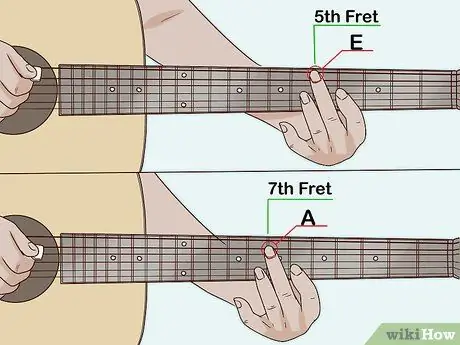
Step 3. Compare the harmonics to tune the A string using the low E string
Play the low E string harmonic at the 5th fret, then play the A string harmonic at the 7th fret. Listen carefully. Maybe you should play this a few times.
- Turn the A string down or up until the harmonics sound equal to the pitch produced by the low E string.
- If the low E string hasn't been tuned using a reference note, you can tune the guitar on the strings yourself, but it doesn't need to be in concert or absolute tune.
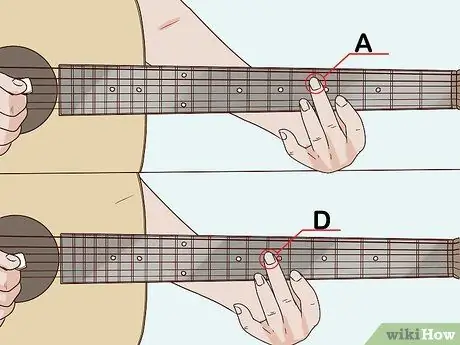
Step 4. Repeat the same steps on the D and G strings
When the A string is tuned, play the harmonic of the A string at the 5th fret, then compare it to the harmonic of the D string at the 7th fret. Tune the D string down or up if necessary to match the pitch.
To tune the G string, play the D string harmonic at the 5th fret, then compare it to the G string harmonic at the 7th fret
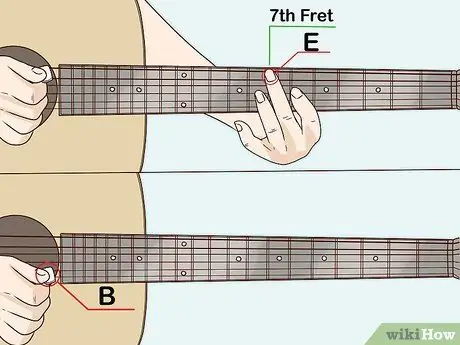
Step 5. Tune the B string by playing a low E string harmonic on the 7th fret
The harmonics of the low E string on the 7th fret have the same pitch as the open B string when strummed. You don't need to play the harmonics of the B string, just pluck the strings without pressing them against the neck of the guitar.
Tune the B string down or up until the notes are perfectly aligned
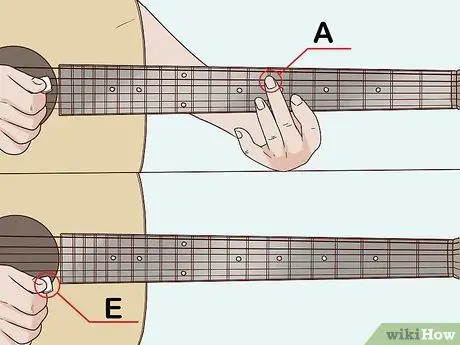
Step 6. Use the harmonics from the A string on the 7th fret to tune the E string high
The process of tuning a high E string is pretty much the same as you would a B string. The note on the open high E string should match the harmonics of the A string on the 7th fret.
When you're done tuning the high E string, the guitar is sure to tune in. Make sure the guitar is getting the right pitch by playing a few chords
Method 3 of 3: Using Reference Tones
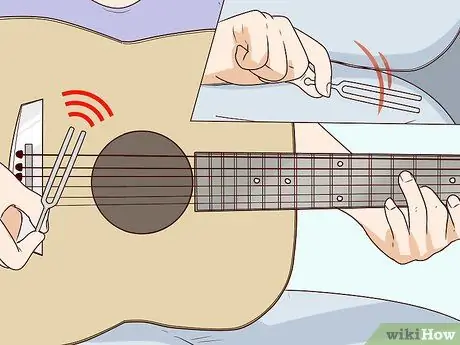
Step 1. Tune the D string using a tuning fork or other tool
If you want a guitar that can sound like a concert note, but you don't have a tuner, use a reference tone to tune one of the strings, then tune the other strings accordingly. You can also use reference notes from a piano or keyboard.
- When you find a reference note for the D string, you can tune the low and high E strings quickly using octaves.
- You can use another string as a reference. However, by using only the D string as a reference, the other strings can be tuned more harmoniously.
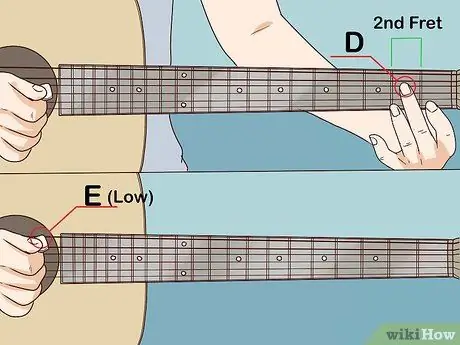
Step 2. Hit the D string at the 2nd fret, then match it against the low E string
Hitting the D string at the 2nd fret will make an E note, but it's an octave higher than the note from the open low E string. Rotate the open low E string down or up until the note is in tune, but an octave lower. When properly tuned, both strings will produce the same note, resulting in one thick sound.
Even if they are an octave apart, the two notes will sound in sync. If you have difficulty hearing the tuning, use another tuning method until your ears are trained and become more sensitive
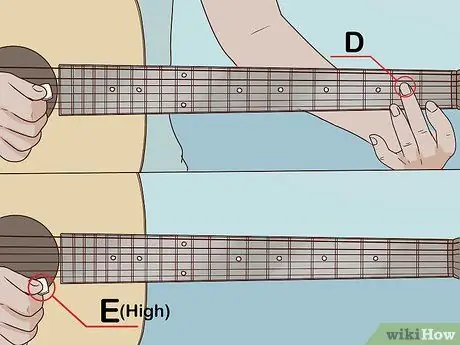
Step 3. Compare the same note with the high E string
The E note obtained from the D string pressed at the 2nd fret is an octave lower than the open high E string (bottom string). Carefully tune the high E string down or up until the two strings are in sync, but 1 octave apart, with no wobble.
If a high E string makes a higher pitch than it should, lower the pitch first. Remember, you have to tune it 1 octave higher than the reference note, which is the E note of the D string on the 2nd fret. Be careful not to set it too high as it may break
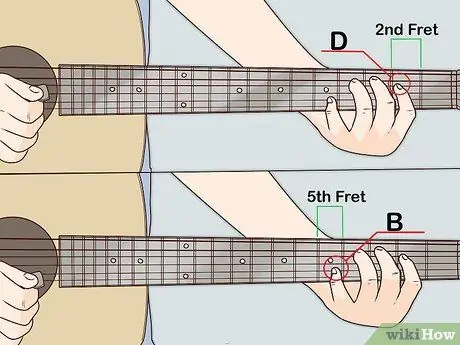
Step 4. Match the same note as the B string pressed at the 5th fret
The E note of the B string at the 5th fret is the same as the open high E note. Play the E by pressing the D string at the 2nd fret. When hitting the B string at the 5th fret, tune the string down or up until it's in tune, but an octave higher.
While you can also tune the B strings using the exposed high E strings, the guitar will be more in tune if you tune all the strings based on just one string (which is the D string)
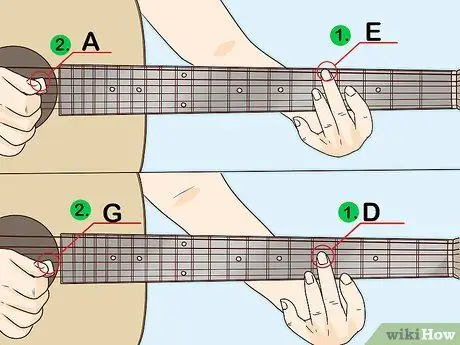
Step 5. Tune the A and G strings using relative tuning
At this point, the easiest way to tune an A string is to hit the low E string at the 5th fret, then tune the note with the open A string. Next, tune the G string using the notes from the D string pressed at the 5th fret.
In this method, you tune a 5-string guitar based on the pitch of the D string. Make sure the guitar produces the right sound by playing a few chords. Make adjustments if necessary
Tips
- Your guitar will stay in tune for a long time if you change the strings regularly, and don't place your guitar in a location with high fluctuations in temperature and humidity.
- If any string sounds higher than it should be, lower the pitch first. After that, raise the pitch slowly until it reaches the correct note. Tuning the strings to a higher note locks the tension on the strings, which keeps them from slipping.
- If your ears are not very sensitive, we recommend using a guitar tuner app. There are many applications for smartphones that can be downloaded for free.






